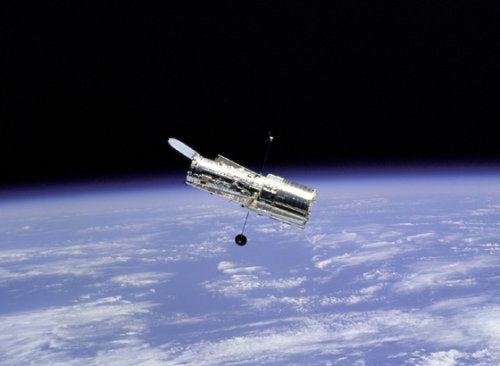We all know the beautiful images Hubble’s capable of, and Ray Villard wrote about some of the fantastic science it has helped advance in Astronomy‘s July issue. But the orbiting telescope has one more feature almost anyone can take advantage of: finding it with your naked eyes in the night sky! The Space Telescope Science Institute, which runs Hubble, has provided two methods of determining just where you can find it overhead at http:// hubblesite.org/the_telescope/where.a.s_hubble_now/. The “Basic” option shows Hubble’s position over a globe and includes latitude, longitude, and altitude. The “Advanced” option shows Hubble’s position and its future path over a map of the world, along with the choice of seeing live weather patterns and determining when Hubble will next fly over a certain area. Traveling at 5 miles per second, Hubble travels once around Earth every 97 minutes, so don’t feel too upset if you’ve just missed it.
See Hubble for yourself
With a little luck and some planning, you could see the world's most famous telescope as it flies overhead.










